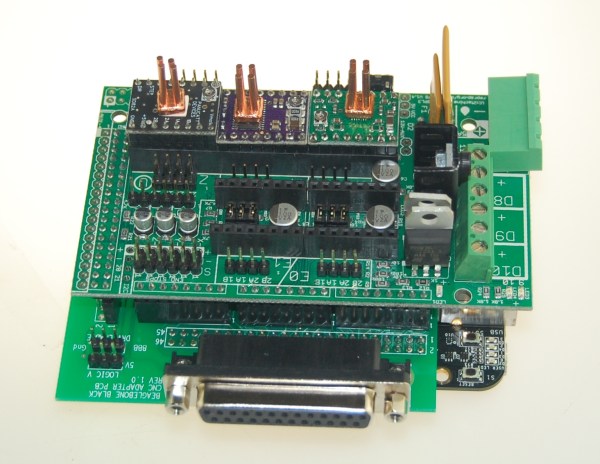[Bart] Wanted to try controlling a CNC with his BeagleBone black, but didn’t want to invest in a CNC Cape. No problem – he created his own translator board for RAMPS. LinuxCNC for the BeagleBone Black has been available for a few months now, and [Bart] wanted to give it a try. He started experimenting with a single stepper motor and driver. By the time he hooked up step, direction, and motor phases, [Bart] knew he needed a better solution.
Several CNC capes are available for the BeagleBone boards, but [Bart] had a RAMPS board just sitting around, waiting for a new project. Most RepRap fans have heard of the RAMPS – or Reprap Arduino Mega Pololu Shield. In fact, we covered them here just a few days ago as part of our 3D Printering series. RAMPS handle all the I/O needed for 3D printing, which carries over quite nicely to other CNC applications as well. The downside is that they’re specifically designed for the Arduino Mega series. Continue reading “BeagleBone Black Does CNC With RAMPS”

















